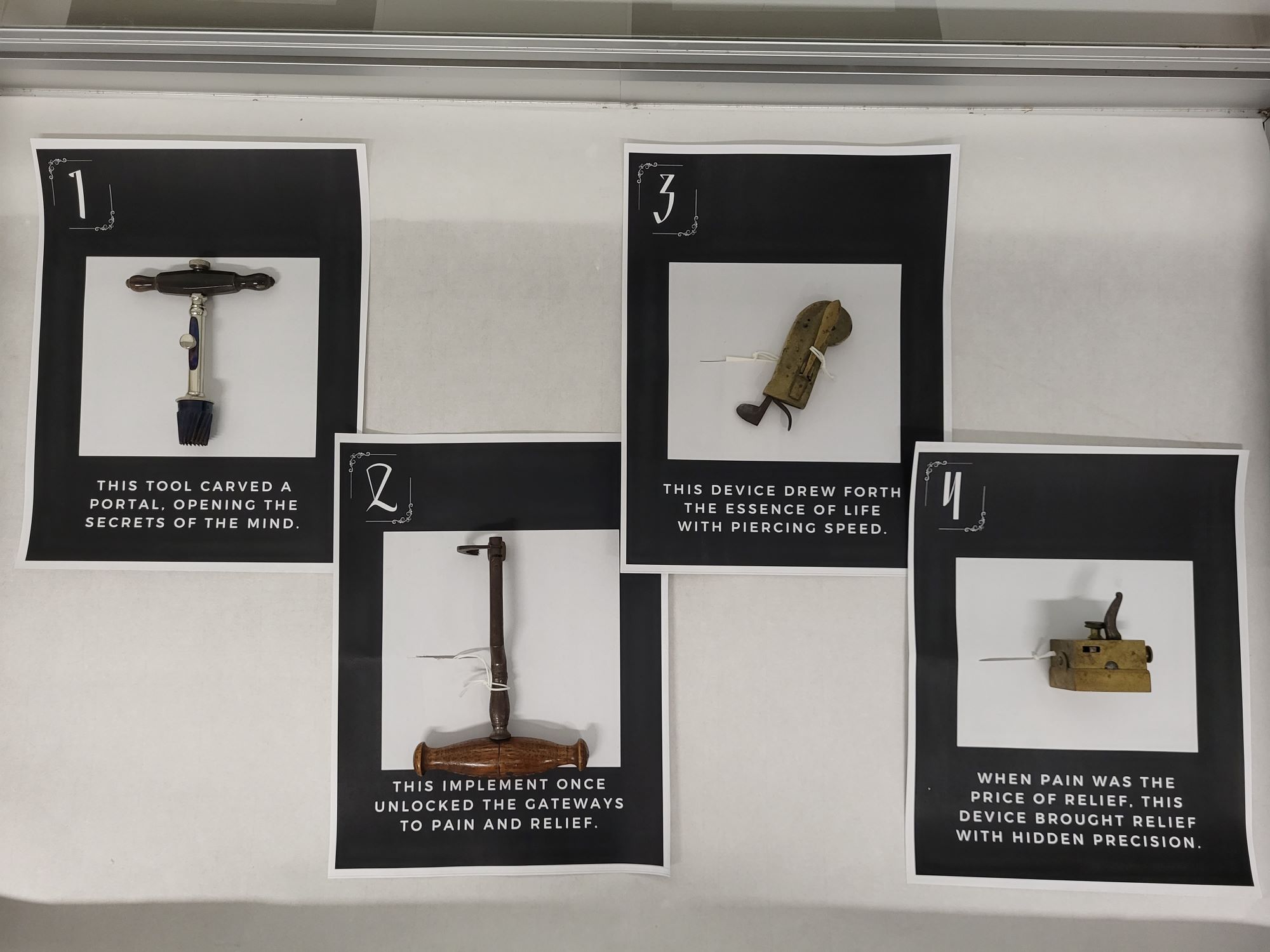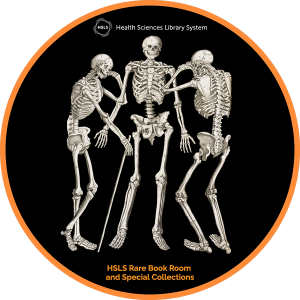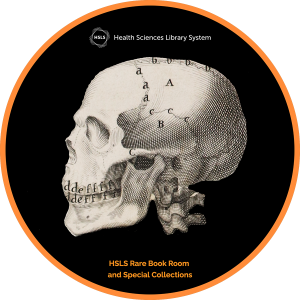On Tuesday, October 31, visitors to Falk Library were greeted with treats and spooky objects. Students helped themselves to free candy and stickers inspired by our History of Medicine Collection.
- Stickers inspired by the HSLS Rare Book Room and Special Collections.
While enjoying their treats visitors could play “Haunted History of Medicine,” a game to guess the names of historical medical objects from the HSLS collection. Take a look at the objects and their clues; can you identify these mysterious medical devices? Find the answers at the bottom of this article.
- This tool carved a portal, opening the secrets of the mind.
- This implement once unlocked the gateways to pain and relief.
- This device drew forth the essence of life with piercing speed.
- When pain was the price of relief, this device brought relief with hidden precision.


Answers:
- Galt trephine (1890) – From Tiemann’s amputating instruments set, this was used to cut a hole in the skull without damaging the brain.
- Dental key (c. 1760) – This device was placed on a tooth and turned, thus “unlocking” the tooth and removing it from the jaw.
- Spring lancet (19th century) – Used for bloodletting, a spring would release the blade to cut into the skin.
- Scarificator (19th century) – Also used for bloodletting, this device contains spring-loaded blades that when released would create a series of parallel cuts in the skin

